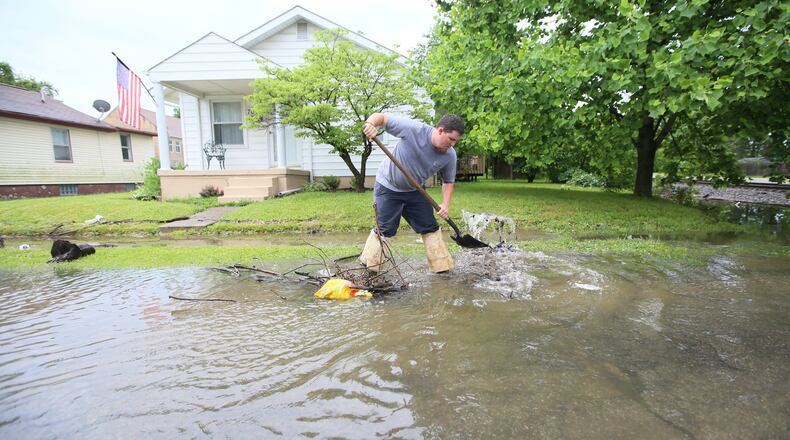Hamilton has several regular flooding areas, including Main Street near Lawn Avenue, where a large area of parking lots and streets, including Main — one of Hamilton’s most-used thoroughfares — can be swamped with two feet of water, flooding nearby businesses.
Hamilton officials created the storm water fee in 2001, and it has never risen from the original charge that works out to $3.60 per month for a typical residence.
Jim Logan, Hamilton’s executive director of infrastructure, said the fee increase should help resolve flooding issues in places like Tabor Lane, in the northern part of Hamilton’s West Side, where a family in a floating minivan last year had to be taken out of the vehicle by a water-rescue team.
“The rate was only set up to do emergency repairs and a little bit of concrete repair – basically, catch-basins,” Logan said.
For example, when the city resurfaces a street, it repairs or replaces the concrete catch-basins that convey rain into the storm sewers that lead to rivers and streams. That’s about all the fee pays for, he said.
“So when you look at the whole storm-water system across the city, that means we’re not doing any preventive maintenance on any of the pipes in the ground, any of the outlet structures,” he said. “It also means that we’re not making any improvements to well-known issues.”
Flooding was particularly bad during 2016 and 2017, with residents and business owners regularly attending council meetings for weeks afterward, pressing the city to resolve the problem.
“That 70-cent increase would position us to be very proactive about solving these problems that we know exist today,” Logan said. “And it all goes toward capital.”
The fee also would help the city pay for $3.8 million it spent on a storm-sewer project that was performed as part of the South Hamilton Crossing highway project that links Ohio 4 with Miami University’s Hamilton campus.
Combined, the Main and Tabor projects are estimated to cost $7.5 million, and the city would use the increased fees to buy debt for those projects and the South Hamilton Crossing work.
Tom Sanders, an owner of Butler County Lumber Co., said the fee increase seems appropriate, considering that something must be done to resolve the issue.
Not only is the Lumber Company near the flooding area, but it also owns properties in the immediate area that it rents out to other businesses.
“Obviously, something needs to be done, because every heavy rain it floods,” Sanders said. “We own some rental property down there, and it has gotten into the tenants’ spaces. So whatever needs to be done to fix the problem, or what’s causing the problem, should be addressed by the city.”
One of his former tenants, Jamie Bowling, owner of Sign Addiction, which flooded more than once, repeatedly pleaded with officials for a solution. She had left sand bags in front of her store in an effort to keep water from damaging equipment and merchandise, but told officials the sand bags made it look like her shop was closed.
Efforts to reach the business were unsuccessful.
As for the fee increase, Sanders said it sounded reasonable: “Obviously, the infrastructure needs to be repaired or enlarged to alleviate the problem. I understand someone needs to pay for it.”
To eliminate the Main Street flooding, the city likely will significantly increase the sizes of several storm-water pipes, so water flows more quickly from the area, which is almost completely covered by concrete and asphalt. Also, as part of the nearby reconfiguration of Main Street with Cereal, Haldimand, Western and McKinley avenues, the city will redirect storm water to nearby Two Mile Creek.
About the Author


